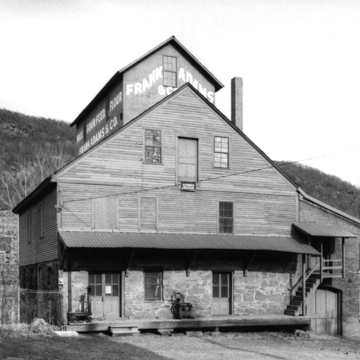In 1831 miller John Cary gained the right of first water at the powerful Bellows Falls and built this substantial gable-front gristmill on the west side of the Connecticut River. At grade, it is one-and-a-half stories of wood frame with a large monitor, atop a raised stone first story. On the rear, facing the river, the mill is stone with two stories below grade. When the Adams family acquired the mill in 1875, they built a brick, shed-roofed addition for offices and storage and upgraded the sorting and grinding machinery. Unlike many late-nineteenth-century gristmills, this one successfully switched to electric power, possibly because it is located next to a hydro-electric facility. The Adamses ran the mill continuously until the mid-1960s, when its present owner, New England Power, acquired it. Today the Bellows Falls Historical Society uses the mill as their museum.
You are here
Adams Gristmill
If SAH Archipedia has been useful to you, please consider supporting it.
SAH Archipedia tells the story of the United States through its buildings, landscapes, and cities. This freely available resource empowers the public with authoritative knowledge that deepens their understanding and appreciation of the built environment. But the Society of Architectural Historians, which created SAH Archipedia with University of Virginia Press, needs your support to maintain the high-caliber research, writing, photography, cartography, editing, design, and programming that make SAH Archipedia a trusted online resource available to all who value the history of place, heritage tourism, and learning.















